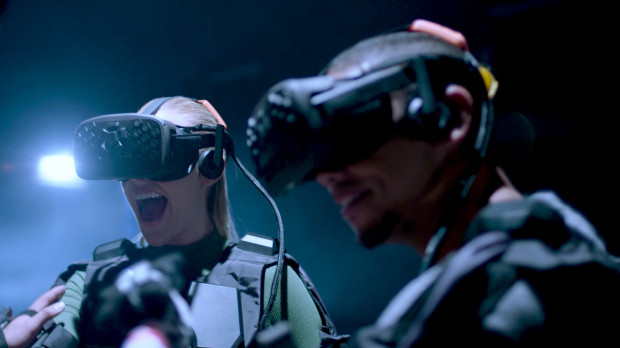
Experimenting with virtual reality is an exciting — and somewhat unnerving — process. It often requires much trial and error, which is precisely why the team at Spaces needed to find a final stage prototyping process to aid them. That’s where Shapeways stepped in. Spaces loves Shapeways’ dimensional accuracy and durability and has used 3D printing –primarily the Multi Jet Fusion Plastic PA12 material – ever since first discovering the company.
Why is it beneficial to print with Shapeways over traditional manufacturing methods such as injection molding?
Spaces: We are constantly inventing and iterating, most of the time under very tight time constraints. Using 3D printing allowed us to make parts that broke some rules and to make changes to parts quickly. Shapeways helped us create parts that could not be manufactured through conventional injection molding. Undercuts are a major concern with any tooling for injection molding and create a lot of work to get parts made.

Spaces utilizes 3D printing to build virtual reality experiences. (Photo courtesy of Spaces)
Which is your most used material?
Our most used material is the Multi Jet Fusion Plastic PA12 because it gives us acceptable resolution and is durable.
Why do you print with Shapeways versus desktop 3D printing?
The quality and quantity of the Shapeways parts we print are the main benefit. For the most part, desktop printing does not produce the same quality and resolution. Also, most desktop printers can be unreliable, which is something we cannot take a chance with when printing large quantities of parts for our installations. Most of our parts are conceived using desktop printing methods and then turned over to Shapeways for printing en masse.
What are the added benefits of using Shapeways?
We have been impressed with the customer service. Personal attention is very important when we are working against tight deadlines.
More from the Material of the Month Series: PA12
Part One: Material Overview
Part Two: Material Comparison: Nylon Plastics
Part Three: Business Example: PA12 used in the virtual reality industry
Part Four: Tutorial: Post processing PA12



these products always seems interesting and exciting to experience